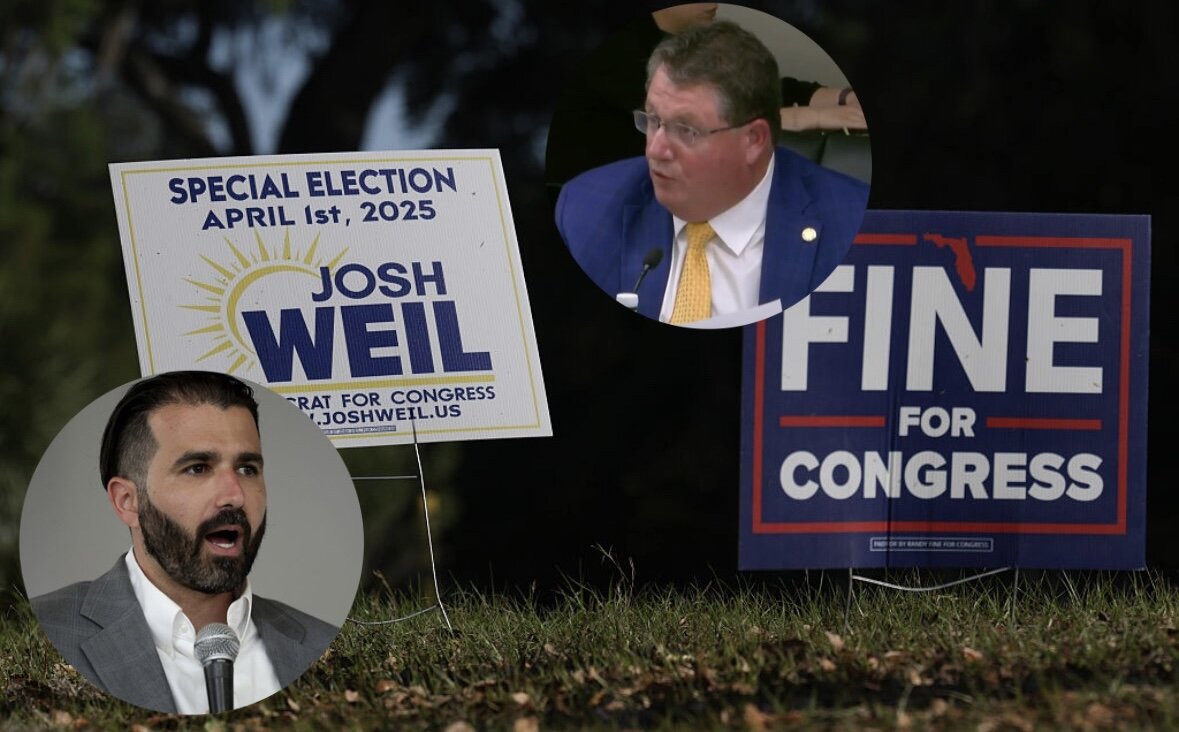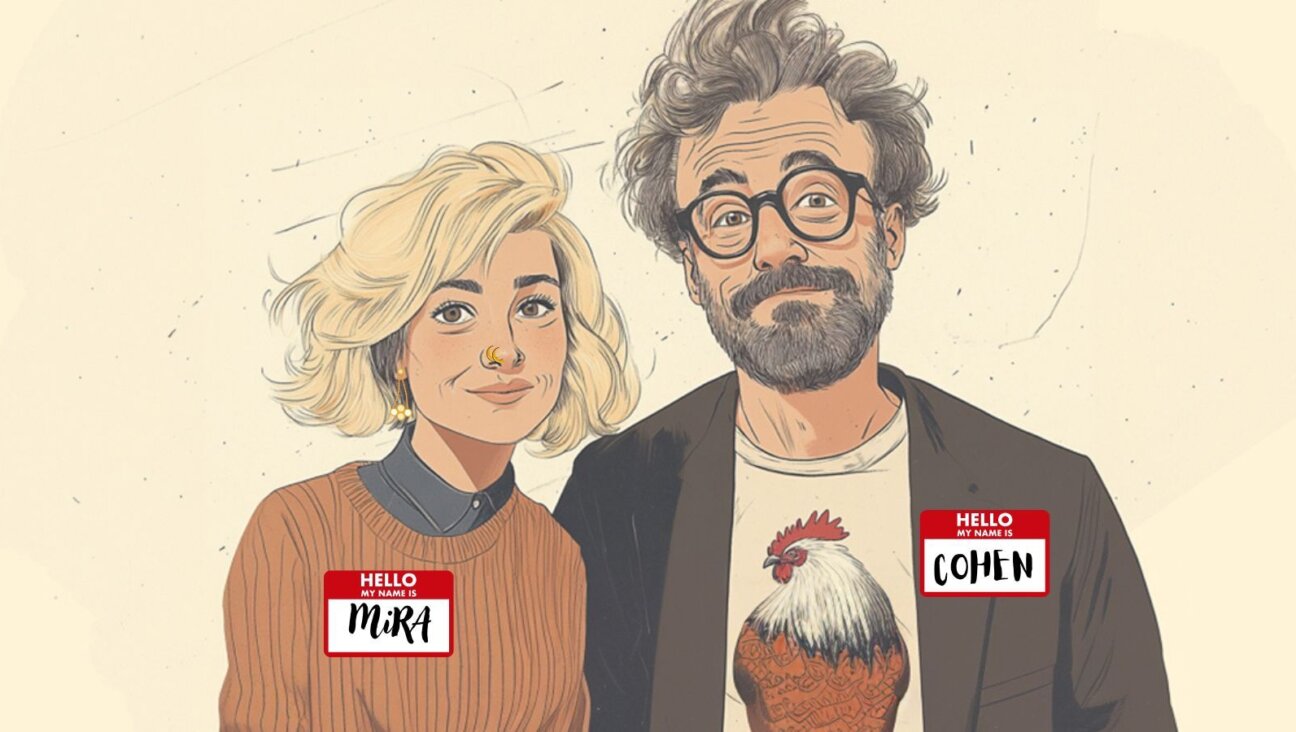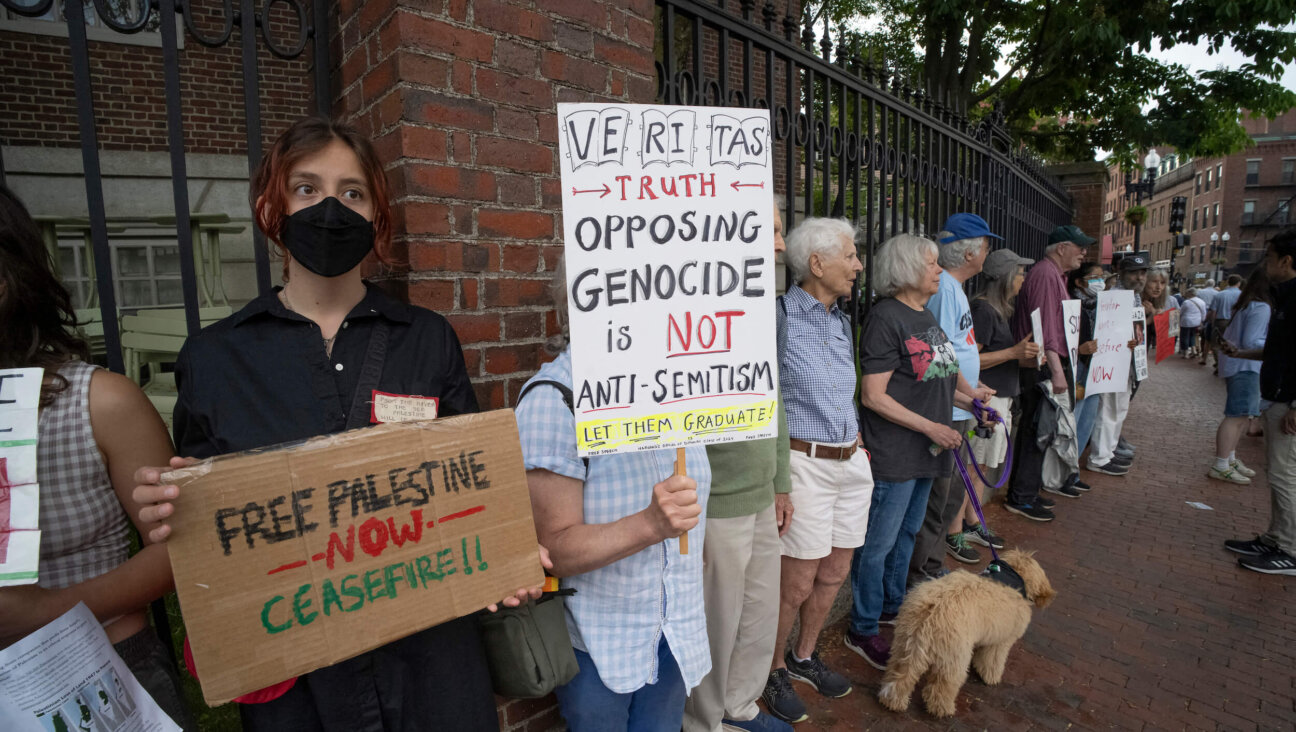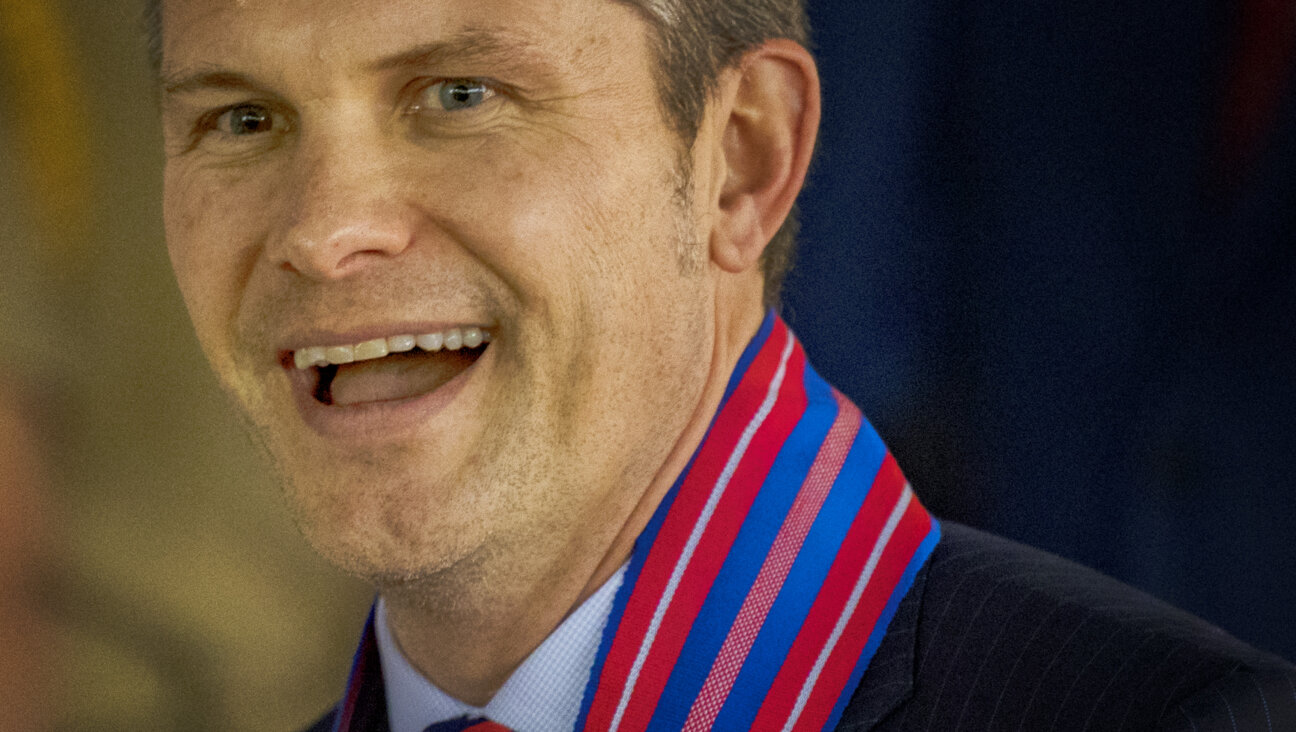And the Award Goes to… Queer Yiddishkeit
Last week’s Grammy Award to the Klezmatics for their first all-English album, “Wonder Wheel,” was joyously reported by many Jewish news outlets, including this newspaper. For all the media coverage, however, no mention was made of the Klezmatics’ iconic status in the Queer Yiddishkeit movement.
Never heard of the Queer Yiddishkeit movement? Until last summer, neither did I.
Then, an Israeli friend told me he had learned from his (straight) daughter, a doctoral student in women’s Yiddish literature at Berkeley, that a large proportion of her colleagues are gay. Really? Interviews over the next several months of past and present YIVO staff members, klezmer performers, Yiddish scholars and others confirmed it: Gay Jews have flocked to Yiddish and klezmer.
It’s not that the Queer Yiddishkeit movement has been kept secret; it was more than 10 years old when, in 1996, The Village Voice reported that there was “a groundswell of gay and lesbian interest in Yiddish culture” and that the Klezmatics are “squarely in its forefront.” The piece described KlezKamp — “kamp” being a double-entendre par excellence — a weeklong Yiddish folk-culture convention, as “the original spawning ground of Queer Yiddishkeit.” Soon there emerged other gay-oriented klezmer groups with such irresistible names as Isle of Klezbos and Gay Iz Mir.
And the insurgency was not only in performance art. For example, the board of the National Yiddish Book Center, founded in 1980, consisted of “Aaron Lansky and five lesbians,” according to Adrienne Cooper, director of program development of the Workmen’s Circle and herself a Yiddish singer and actress.
All of which irritated the hell out of the usual suspects.
Well-placed individuals in the Yiddish and klezmer revivals described attempts by some to put a stop to a “takeover” by gay people. None of the individuals wanted to be quoted on the record.
Nevertheless, the snowball kept rolling. Alicia Svigals, a superb violinist and founding member of the Klezmatics, wrote that gay people “surprised each other and everyone else with our unexpectedly large numbers at Klezkamp, the YIVO summer program, and on the staff of YIVO and the National Yiddish Book Center. As younger gays started showing up, they brought queer sensibility, and then queer Yiddishism, with them.”
The affinities between gay people and Yiddish, and especially bundist, culture are, when you think about it, obvious: both are staunchly secular, cosmopolitan, progressive and often marginalized. “Queer Yiddishkeit gives me permission to go back to the world of my grandparents without leaving myself behind,” juggler Sara Felder said.
“It’s about alienation from the Jewish religious establishment,” said Alisa Solomon, a former staff writer for The Village Voice. “There’s a kind of analogy people make with the marginalized status of Yiddish itself. It’s an outsider stance.”
(Spoilsport David Roskies, a professor of Jewish literature at the Jewish Theological Seminary, says Yiddish is popular because it provides an easy but short-lived way for people to connect with a piece of their Jewishness. “You don’t have to belong to any organization, don’t have to have any ideology,” he said, according to a news report. “You can lay any trip you want to on Yiddish and feel you’re doing something authentic and meaningful.”) The modern Yiddish revival is a way for some progressive Jews, gay and straight alike, to repudiate the macho, Israel-inspired “new Jew.” In the past 25 years, machismo has lost its appeal for many, and that much-maligned Eastern European intellectual no longer looks so bad.
It is also a way to be Jewish while avoiding “the Israel problem.” (Having it both ways, klezmer musicians have played on the sidelines of recent Israel Day parades for the “Two Peoples, Two States” contingent, supporting Israel while opposing the occupation.)
The klezmer appeal, though, is not as obvious. Klezmer, after all, is closely associated with wedding music, a Jewish ritual largely denied to gay people. Furthermore, the old-time klezmorim weren’t necessarily so progressive.
But there is the beauty of the sound of klezmer. And maybe because klezmer was primarily instrumental and therefore textless, it has been available to the staunchly secular revival. Which is not to say that klezmer was ever divorced from Jewish religion. But turning liturgical melodies into upbeat dance tunes, as klezmorim did, “was not an expression of opposition to religion”; it was, rather, a manifestation of “total comfort with it” as well as the “integratedness of religion into Jewish life,” Svigals said. (Modern klezmorim embrace the wedding music tradition and turn it to queer purpose with such songs as “Kale-Kale Mazel Tov.”)
The presence of gay people and gay themes in Yiddish culture, however, is not new. Queer Yiddishists tell us, for example, that Yiddish cinema in the 1930s contained “encrypted messages” on homosexuality — think Molly Picon in her trouser role in “Yidl Mitn Fidl,” what Eve Sicular calls “cross-dressing in the service of family values.” She refers to the “gay subtext of Yiddish cinema during its heyday, from the 1920s to the outbreak of World War II, which reveals distinctly Jewish concerns of the time” such as “conflicted identity, passing, and same-sex attachments.”
With these and other examples, queer Yiddishists say that this movement is in no way a disjuncture with the Jewish past but is in fact old strands woven into a new and vibrant Jewish reality. With the Klezmatics as Exhibit A, they make a convincing case.
Kathleen Peratis, a partner in the New York law firm Outten & Golden, is a trustee of Human Rights Watch.
The Forward is free to read, but it isn’t free to produce

I hope you appreciated this article. Before you go, I’d like to ask you to please support the Forward.
At a time when other newsrooms are closing or cutting back, the Forward has removed its paywall and invested additional resources to report on the ground from Israel and around the U.S. on the impact of the war, rising antisemitism and polarized discourse.
Readers like you make it all possible. We’ve started our Passover Fundraising Drive, and we need 1,800 readers like you to step up to support the Forward by April 21. Members of the Forward board are even matching the first 1,000 gifts, up to $70,000.
This is a great time to support independent Jewish journalism, because every dollar goes twice as far.
— Rachel Fishman Feddersen, Publisher and CEO
2X match on all Passover gifts!
Most Popular
- 1

News A Jewish Republican and Muslim Democrat are suddenly in a tight race for a special seat in Congress
- 2

Film & TV What Gal Gadot has said about the Israeli-Palestinian conflict
- 3

Fast Forward The NCAA men’s Final Four has 3 Jewish coaches
- 4

Culture How two Jewish names — Kohen and Mira — are dividing red and blue states
In Case You Missed It
-

Fast Forward ‘Another Jewish warrior’: Fine wins special election for U.S. House seat
-

Fast Forward A Chicagoan wanted to protest Elon Musk — and put a swastika sticker on a Jewish man’s Tesla
-

Fast Forward NY attorney general orders car wash to stop ripping off Jews with antisemitic ‘Passover special’
-

Fast Forward Cory Booker proclaims, ‘Hineni’ — I am here — 19 hours into anti-Trump Senate speech
-
Shop the Forward Store
100% of profits support our journalism
Republish This Story
Please read before republishing
We’re happy to make this story available to republish for free, unless it originated with JTA, Haaretz or another publication (as indicated on the article) and as long as you follow our guidelines.
You must comply with the following:
- Credit the Forward
- Retain our pixel
- Preserve our canonical link in Google search
- Add a noindex tag in Google search
See our full guidelines for more information, and this guide for detail about canonical URLs.
To republish, copy the HTML by clicking on the yellow button to the right; it includes our tracking pixel, all paragraph styles and hyperlinks, the author byline and credit to the Forward. It does not include images; to avoid copyright violations, you must add them manually, following our guidelines. Please email us at [email protected], subject line “republish,” with any questions or to let us know what stories you’re picking up.















